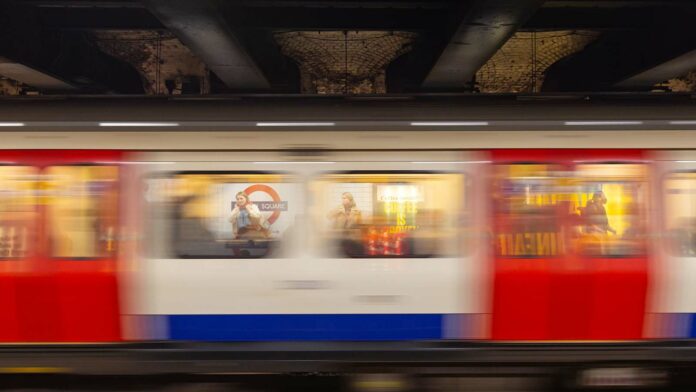Weekday Tube use has gone up by a quarter since the work from home restrictions were eased on 19 January.
It now stands at 60 per cent of the pre-pandemic levels – an improvement on 45 per cent in early January. Canary Wharf, Mansion House and Aldgate stations are seeing numbers between 8 and 9am close to doubling the numbers from the period when working from home restrictions were in place.
Ridership on the Waterloo and City line is now just under 50 per cent of pre-pandemic levels during peak hours, following a full weekday service resuming on 31 January.
At weekends, ridership on the Tube is now at around 75 per cent of pre-pandemic levels and key tourist stations such as Leicester Square are already seeing ridership levels above 80 per cent on Saturday. The Night Tube is continuing to see increased ridership, with levels on the Victoria and Central line now at around 45 per cent of those seen on those lines prior to the pandemic. Ridership on the Night Overground, which operates between Highbury & Islington and New Cross Gate on Friday and Saturday nights, is also now around 50 per cent of levels seen before the pandemic.
TfL says increased ridership is hugely important if the capital is to drive the national recovery from the pandemic. London’s net contribution to the Treasury was £36 billion in the year before the pandemic, and TfL contracts contribute around £7bn to the UK economy while supporting 43,000 jobs around the country, with 55p of every pound spent on London Underground by TfL going outside of London.
Seb Dance, deputy mayor for Transport, said: “London’s transport network is crucial for a sustainable recovery, and it’s fantastic to see passengers confidently using it as they return to workplaces and to enjoy all the city has to offer. The increased footfall is great news for London’s businesses and hospitality venues which have been hit so hard by the pandemic. These figures also highlight how vital a comprehensive bus network is for London, not only for people getting around central London but also for those who don’t live as near to other modes of transport – with some areas in outer London nearly at pre-pandemic levels once again. It’s crucial that the Government agree long-term capital funding, so we are able to keep these services running, to aid both London’s recovery and that of the wider country. Throwing that all away now would be a tragedy with far-reaching consequences for Londoners and rest of the UK.”
Andy Lord, Chief Operating Officer for Transport for London, said: “Public transport is key to the capital’s recovery from the pandemic, and we continue to run a near-normal service across our Tubes, buses and trains. These latest figures indicate that millions of Londoners are now regularly using public transport, showing continued confidence that services are safe, clean and reliable.”
Catherine McGuinness, policy chair at the City of London Corporation, said: “These new figures from TfL show that a recovery from the Covid-19 pandemic is well under way in the capital and that confidence is coming back among City workers and visitors. They’re reflected by the queues I’m finding when out for coffee and the reactivated offices I see from my window.
“This return of commuters will be welcome news for the many City businesses that rely on footfall for trade and for employers who have dedicated a lot of resource to deliver Covid-secure workplaces. We look forward to even more workers and visitors coming back to enjoy the world-class shopping, cultural and hospitality that the Square Mile has to offer, and will be playing our part to welcome them.”
Ros Morgan, chief executive, Heart of London Business Alliance, said: “We are heartened to see the pick-up in Tube journeys particularly at Leicester Square and other key tourist stations since the removal of working from home guidance and restrictions. The welcome return of workers not only boosts the creativity, collaboration and productivity that comes from an office environment but is also essential for ensuring the recovery of businesses and cultural venues that make up the capital’s unique ecosystem.
“Central London was one of the areas worst hit by the pandemic, due to its low proportion of residents and its high dependence on tourism and commuters to provide footfall. The capital’s retail and hospitality businesses are dependent on people coming back to the office to make up for the 47 weeks of sales lost between March 2020 and September 2021. We hope that residents, commuters and visitors will continue to do their part by visiting and enjoying the capital’s world-class hospitality and retail offering during this critical post-Covid recovery phase.”







































 0113 2082620
0113 2082620 info@railbusinessdaily.com
info@railbusinessdaily.com 15 Mariner Court, Wakefield WF4 3FL
15 Mariner Court, Wakefield WF4 3FL

